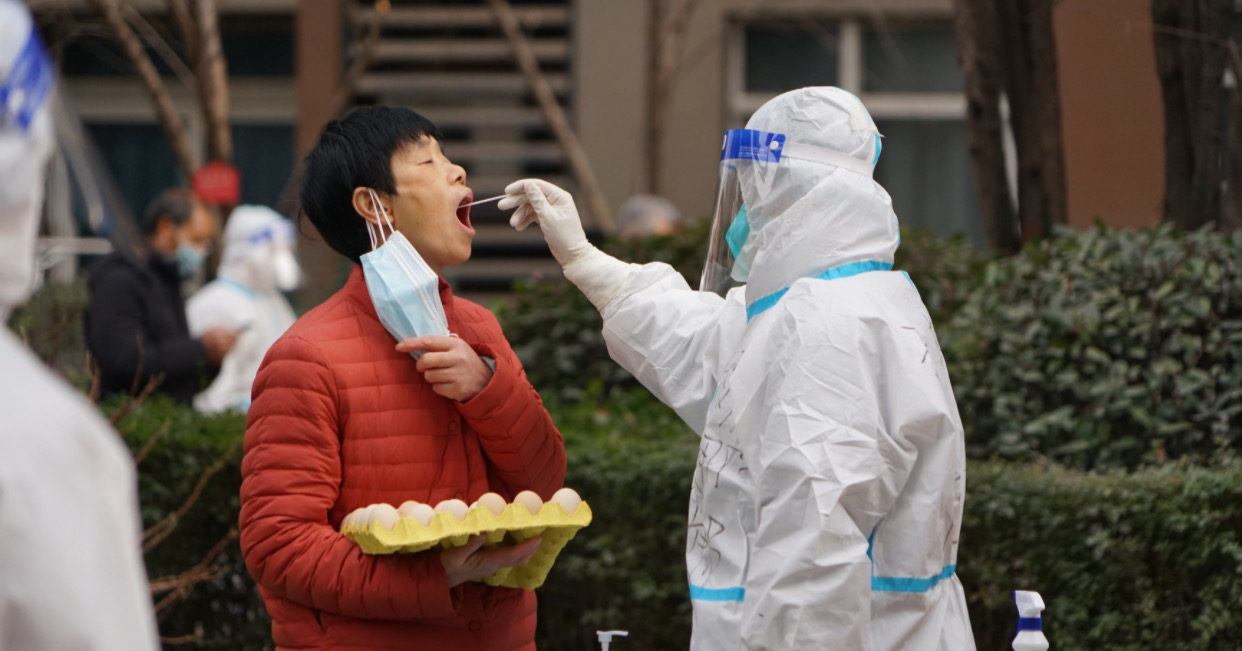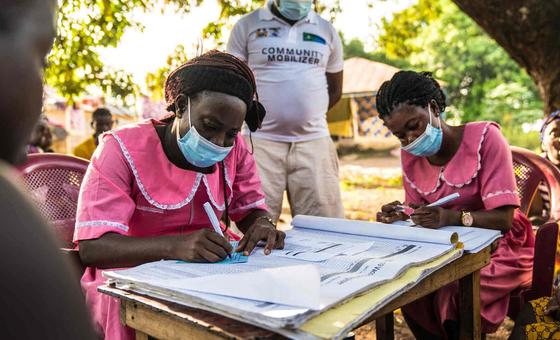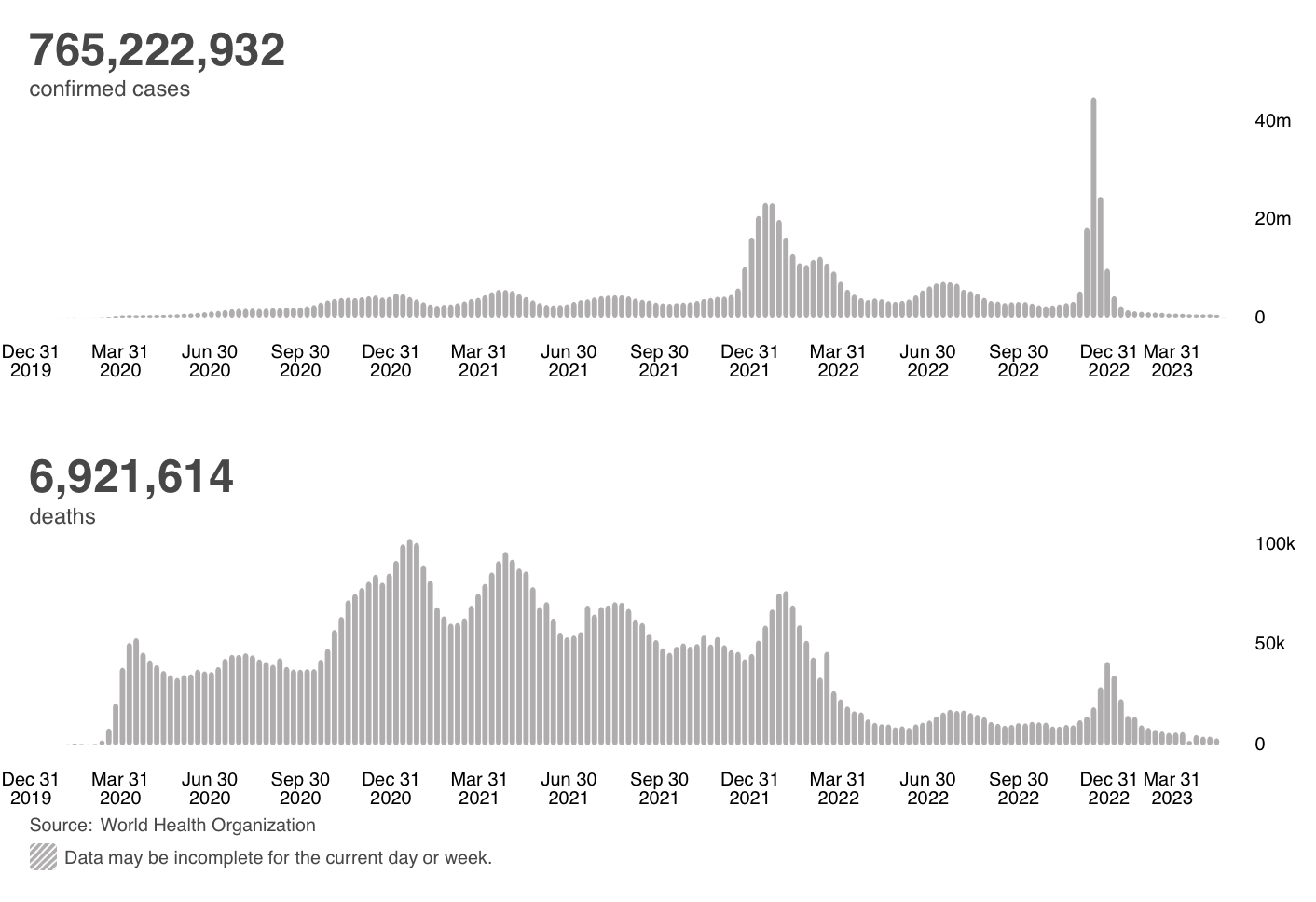For most of us, it feels like COVID-19 has already been over for months—no need to hide your extra visitors’ shoes, no need to wear masks in public, and no need to scan the SafeEntry QR code.
The official end of the COVID-19 global health emergency, however, was only declared by the World Health Organisation (WHO) on Friday.
Here’s what you need to know about it.
WHO Director-General Declares the End of the COVID-19 Global Health Emergency
It has been three years since the WHO declared the global emergency status for COVID-19 in January 2020. Fortunately, it has finally come to an end.
On Friday (5 May), Tedros Adhanom Ghebreyesus, the director-general of the WHO, declared that COVID-19 is no longer a public health emergency of international concern (PHEIC) as cases and deaths related to COVID-19 have been on a downward trend for over a year.
Yesterday, the #COVID19 Emergency Committee met for the 15th time and recommended to me that I declare an end to the public health emergency of international concern. I have accepted that advice.
With great hope I declare COVID-19 over as a global health emergency.
— Tedros Adhanom Ghebreyesus (@DrTedros) May 5, 2023
Evidently, from the way many of us have already sunk back into the routines of our pre-COVID-19 lives, the COVID-19 pandemic no longer has the same hold it used to have on the world. While some still choose to remain cautious, most of us no longer obsessively check the case numbers daily and no longer do ART tests every morning.
Acknowledging that most countries have reverted to everyday life, Tedros decided to accept WHO’s International Health Regulations Emergency Committee’s recommendation to declare an end to the PHEIC.


For some of us, these past three years have been dreadfully long. Yet, for others, it feels like just yesterday when we were stuck at home doing home workouts, making dalgona coffee and complaining about the lack of bubble tea during the circuit breaker.
Regardless, we’re glad that things are finally returning to normal again.
What Does the End of the PHEIC Mean For the World?
The value of declaring a PHEIC is not simply giving you an excuse to call in sick for work because “Boss… I think I am in close contact with a positive case”.
The value of a PHEIC is this: States must respond swiftly to any formal declarations of a PHEIC by WHO, meaning that they must take heed of WHO’s recommendations to manage the PHEIC in question, such as COVID-19.
Usually, countries will report cases to the WHO to keep track of worldwide cases. This also allows for a coordinated international response to the public health emergency.
Nations can also declare their own public health emergencies, separate from WHO’s declaration of a PHEIC.

At this point, you may think: “Aiya, PHEIC, pandemic, outbreak, all the same what… No meh?”
Let’s put it this way: A PHEIC is usually a pandemic, but a pandemic is not always a PHEIC.
A pandemic can be any international disease outbreak, but a PHEIC is a formal designation for a disease outbreak of international concern, as its name suggests.
A PHEIC is like a zhng-ed up version of a pandemic—it has a special status, like when you get your kopi peng in a plastic cup instead of a plastic bag.
This explains why only several events were declared to be PHEICs since 2007. This includes the 2009 H1N1 influenza pandemic, Ebola, poliomyelitis, Zika and COVID-19. Poliomyelitis continues to be a PHEIC as of today.

The end of the PHEIC is likely to see many countries beginning to declare an end to their nation’s public health emergencies as well.
For instance, the US will end its COVID-19 emergency declarations next week. This has a variety of repercussions, including an end to free COVID-19 vaccinations.
The Worst Thing Any Country Could Do Now is To Let Down its Guard
However, the end of the PHEIC for COVID-19 doesn’t mean that COVID-19 doesn’t exist anymore.
In the last week of April, more than 3,500 COVID-19-related deaths were reported. And while most of us are vaccinated against COVID-19, billions worldwide still aren’t.
The end of the PHEIC just means that COVID-19 is no longer as severe as it once was. To put things into perspective, there were nearly 100K deaths daily at the height of the pandemic.
Join our Telegram channel for more entertaining and informative articles at https://t.me/goodyfeedsg or follow us on Twitter : https://twitter.com/goodyfeed
“The worst thing any country could do now is to use this news as a reason to let down its guard,” Tedros said in a media briefing following Friday’s declaration.
You could still test positive for COVID-19 and take MC for it. The only thing the end of the PHEIC means is that COVID-19 can now be managed like other common infectious diseases like influenza.
Whether this means you get to continue to work from home, well, that’s up to your boss, not WHO.
More Than 765 Million Confirmed Cases; Nearly 7 Million Dead Globally
According to WHO’s Coronavirus Dashboard, since the start of the pandemic, there have been more than 765 million confirmed cases and nearly 7 million deaths due to COVID-19 globally.
However, Tedros noted that the number of deaths probably isn’t just 7 million, but rather a little closer to 20 million.

The highest number of confirmed cases came from the US, which had 103 million cases and China, which had 99 million cases at the time of writing.
However, in terms of deaths, since the start of the pandemic, COVID-19 has caused more than 1 million deaths in the US, which is the highest globally. This is followed by Brazil, where slightly more than 700,000 deaths were reported.
Back home in Singapore, according to WHO data, there are more than 2.3 million confirmed cases and approximately 1,700 deaths since the start of the pandemic.
Aren’t you glad we had the circuit breaker? Not only did we manage to keep COVID-19 cases in check, but we also got to witness the magical language-changing cup.
So… What’s Next for WHO?
To guide countries on how to move forward with COVID-19, a review committee will be convened to make recommendations on how to manage COVID-19 in the time to come.
On Wednesday (3 May), WHO has already updated its COVID-19 Strategic Preparedness and Response plan, which sets out how countries may continue to manage COVID-19 for the two years to come.
The devil works hard, but WHO works harder.
Hopefully, even with how much they’re working, the staff at WHO can still take MC for COVID-19 when they test positive.
Would you be jailed for being half-naked in public? Well, the answer will shock you. Seriously. Watch this to the end and you'll understand:




